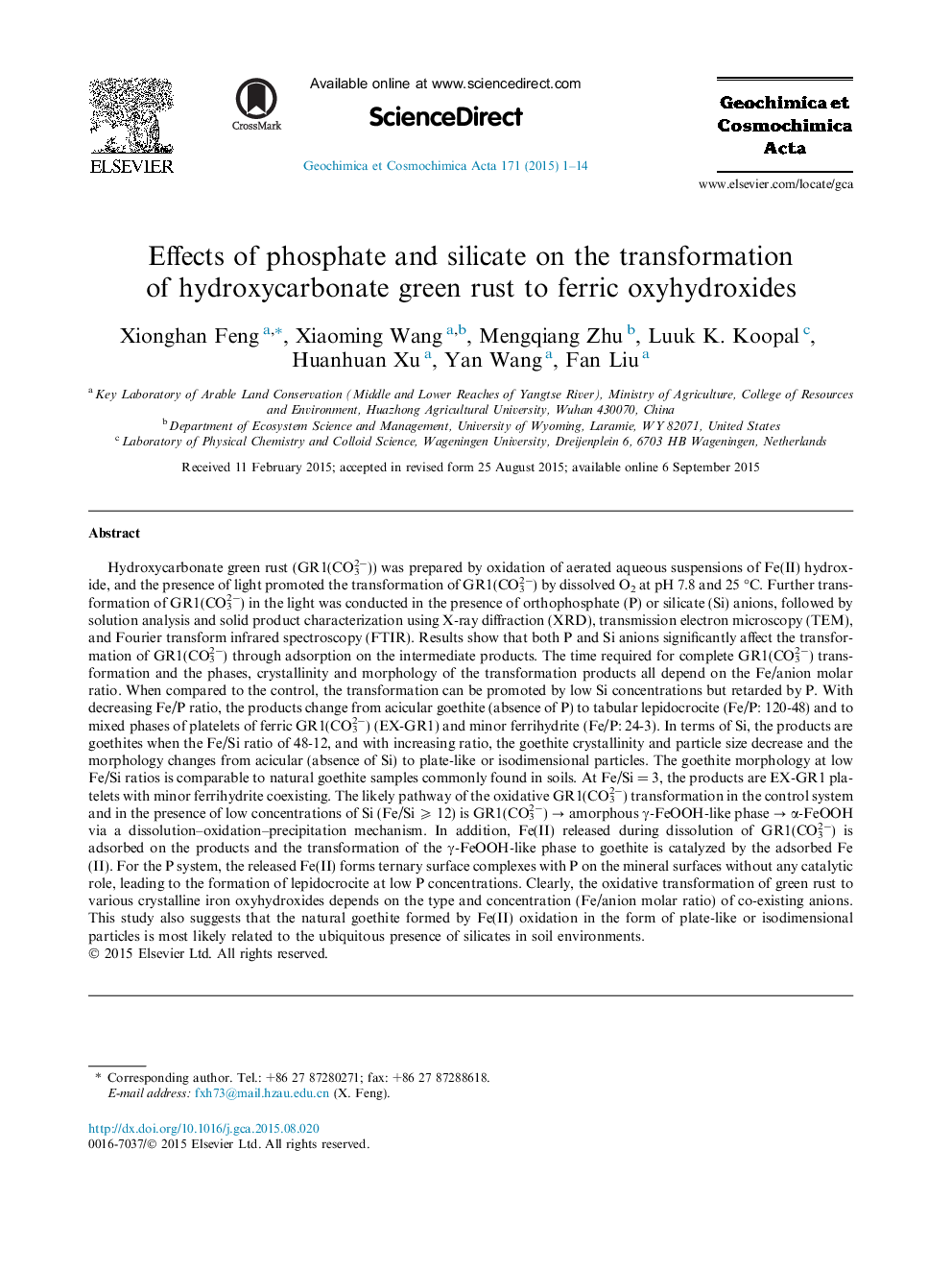| کد مقاله | کد نشریه | سال انتشار | مقاله انگلیسی | نسخه تمام متن |
|---|---|---|---|---|
| 4701841 | 1637986 | 2015 | 14 صفحه PDF | دانلود رایگان |
Hydroxycarbonate green rust (GR1(CO32−)) was prepared by oxidation of aerated aqueous suspensions of Fe(II) hydroxide, and the presence of light promoted the transformation of GR1(CO32−) by dissolved O2 at pH 7.8 and 25 °C. Further transformation of GR1(CO32−) in the light was conducted in the presence of orthophosphate (P) or silicate (Si) anions, followed by solution analysis and solid product characterization using X-ray diffraction (XRD), transmission electron microscopy (TEM), and Fourier transform infrared spectroscopy (FTIR). Results show that both P and Si anions significantly affect the transformation of GR1(CO32−) through adsorption on the intermediate products. The time required for complete GR1(CO32−) transformation and the phases, crystallinity and morphology of the transformation products all depend on the Fe/anion molar ratio. When compared to the control, the transformation can be promoted by low Si concentrations but retarded by P. With decreasing Fe/P ratio, the products change from acicular goethite (absence of P) to tabular lepidocrocite (Fe/P: 120-48) and to mixed phases of platelets of ferric GR1(CO32−) (EX-GR1) and minor ferrihydrite (Fe/P: 24-3). In terms of Si, the products are goethites when the Fe/Si ratio of 48-12, and with increasing ratio, the goethite crystallinity and particle size decrease and the morphology changes from acicular (absence of Si) to plate-like or isodimensional particles. The goethite morphology at low Fe/Si ratios is comparable to natural goethite samples commonly found in soils. At Fe/Si = 3, the products are EX-GR1 platelets with minor ferrihydrite coexisting. The likely pathway of the oxidative GR1(CO32−) transformation in the control system and in the presence of low concentrations of Si (Fe/Si ⩾ 12) is GR1(CO32−) → amorphous γ-FeOOH-like phase → α-FeOOH via a dissolution–oxidation–precipitation mechanism. In addition, Fe(II) released during dissolution of GR1(CO32−) is adsorbed on the products and the transformation of the γ-FeOOH-like phase to goethite is catalyzed by the adsorbed Fe(II). For the P system, the released Fe(II) forms ternary surface complexes with P on the mineral surfaces without any catalytic role, leading to the formation of lepidocrocite at low P concentrations. Clearly, the oxidative transformation of green rust to various crystalline iron oxyhydroxides depends on the type and concentration (Fe/anion molar ratio) of co-existing anions. This study also suggests that the natural goethite formed by Fe(II) oxidation in the form of plate-like or isodimensional particles is most likely related to the ubiquitous presence of silicates in soil environments.
Journal: Geochimica et Cosmochimica Acta - Volume 171, 15 December 2015, Pages 1–14
